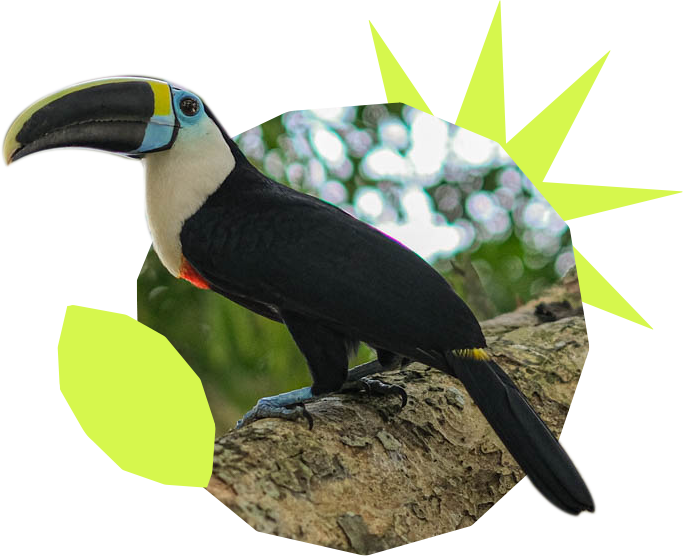
A home for sacred species
Imagine: the sharp song of the pëëriri (nocturnal curassow) travels between the thick foliage before you. The humid air hums with the music of millions of insects, and distant croaks from frogs. Trails through the forest floor reveal the prints of dozens of hooved and pawed inhabitants.
This is the territory of the jaguar, the anaconda, the toucan, the giant otter, the pink river dolphin.
As Jairo Irumenga, a young Waorani leader in the Ceibo Alliance reflects: “The territory of the Amazon is full of different species: plants, fish, birds. It’s innumerable. Thanks to them, we relate and live, we can hunt, fish and nourish ourselves.”
“It’s not only large animals, it’s also the smallest species that inhabit these territories. Without them, the lungs of the earth wouldn’t exist, we couldn’t breathe this clean air. Without them, the life of Amazonian peoples would be destroyed.”
“The Western world often thinks about these species as something to be discovered, as if they’re just finding out about them. But for Indigenous peoples, those who live the forest, they have always existed. We know these beings, and have been in relation with those spirits.”
These powerful intimacies between humans, plants and animals help explain why Indigenous peoples are the most effective guardians of biodiversity in the world. The rich biodiversity of the Amazon exists because of the communities who have nourished and shielded it, sustaining profound relationships to their territories through culture, story and survival.
This interdependence demonstrates why the protection of biodiversity in Indigenous territories is inextricably linked to the protection of Indigenous communities and the recovery of ancestral territories. The fate of conservation, the future of the Amazon, and the prospects of our planet are interlinked, and they all rely on Indigenous leadership and land stewardship.
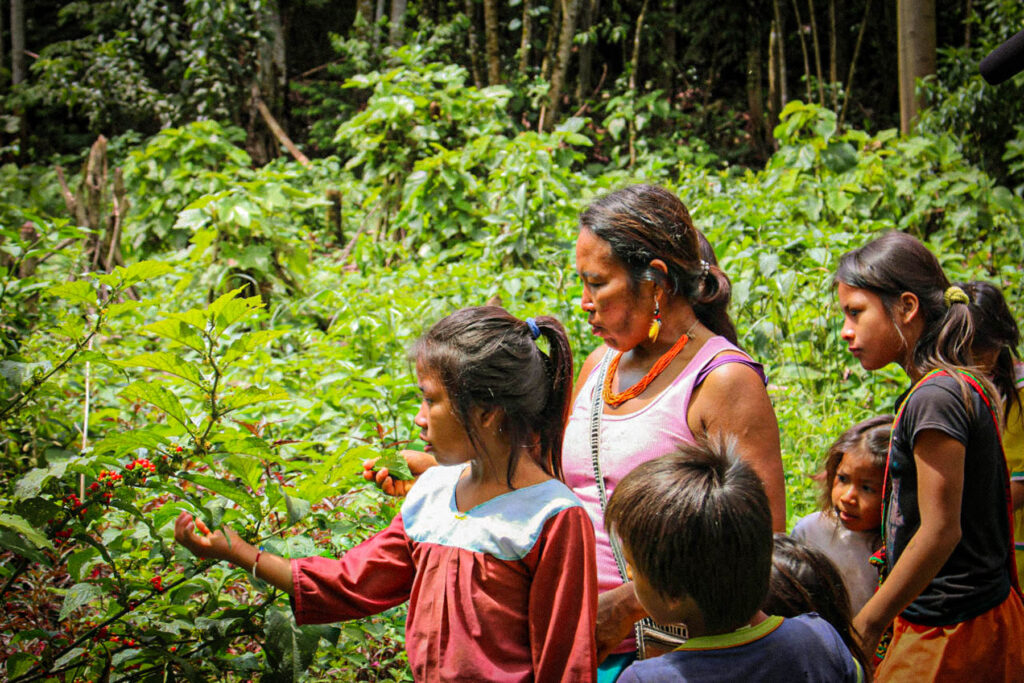
After all, conservation is far more than simply shielding species from predatory humans; it is about protecting the cultures that live a symbiotic unity between humans and the more-than-human world.
A PATCHWORK OF BEINGS
Biodiversity, in the Western world, is typically seen numerically, as a quantity of species. In this sense, the Amazon is unquestionably one of the most biodiverse parts of the planet.
This tapestry of wetlands, jungles and rivers contains 40 percent of global rainforests, 25 percent of terrestrial biodiversity, and the highest diversity of fish species in river ecosystems. The Upper Amazon in particular, where the Andes mountains fold into the Amazon basin, is arguably the most species-rich corner of planet Earth. Here, one single hectare can contain over 100,000 different species of insects.
Yet this perspective, focused on accounting and cataloging a landscape, does not reflect how most Amazonian communities approach their territories. Indigenous worldviews focus less on counting or conceptualizing a place, and more on noticing, sensing and relating.
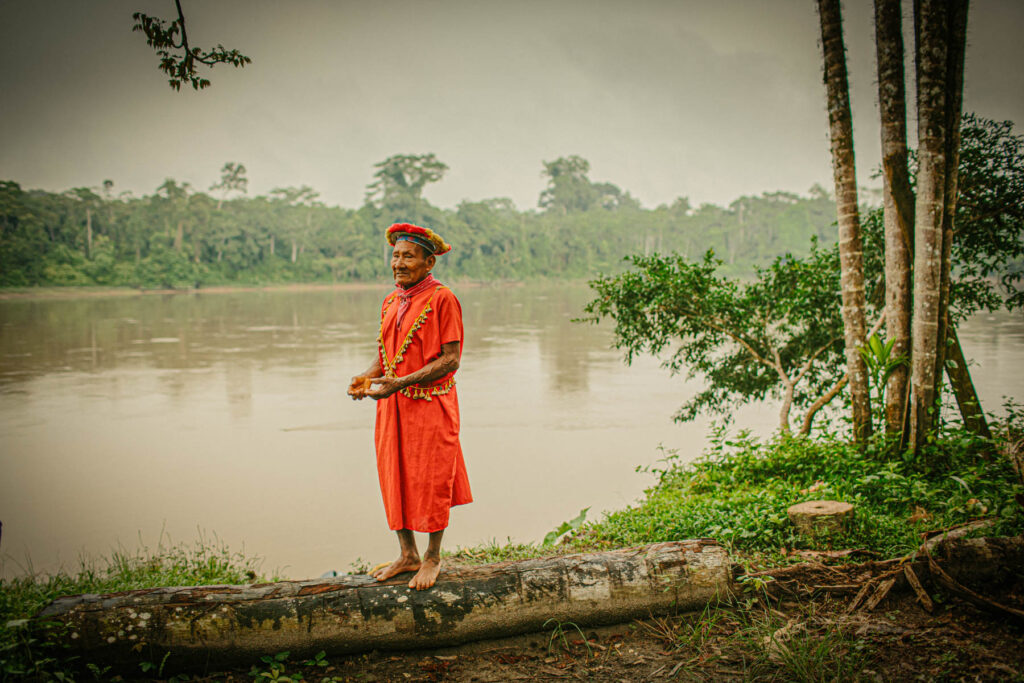
Luke Weiss is Amazon Frontlines’ Director of Mapping & Monitoring, and has lived in the Amazon as part of Siekopai communities for over twenty-five years. As Luke reflects: “I grew up in the U.S and Canada, in a state where you knew every tree, maybe 30 or 40 different trees in total. Here in the Amazon there’s 10,000 different trees, let alone all the other plants. It’s an incredible richness.”
“Hanging out with Siekopai elders, I was just fascinated with their knowledge of all these species, from the insects to the fungus to the fish to the mammals to the plants, the whole system. I studied biology, and I knew entomologists, zoologists, ornithologists. Yet these elders knew more about birds than any ornithologist ever met, more about plants than any tropical botanist I had ever met. It’s not just names and numbers; they know the forest inside-out because it’s practical knowledge their way of life depends on. To be healthy, to be able to raise and feed your family, means knowing how to have sustainable interactions with the territory. It’s very practical and very advanced knowledge.”
One of the reasons the ecological knowledge of Amazonian communities is so sophisticated is because it pays profound attention to relations and cycles. It’s one thing to identify different species of fish – it is another to know their migration patterns, their rhythms, their mating seasons. This awareness recognizes when it may be appropriate to fish or harvest, and when other species are best left alone.
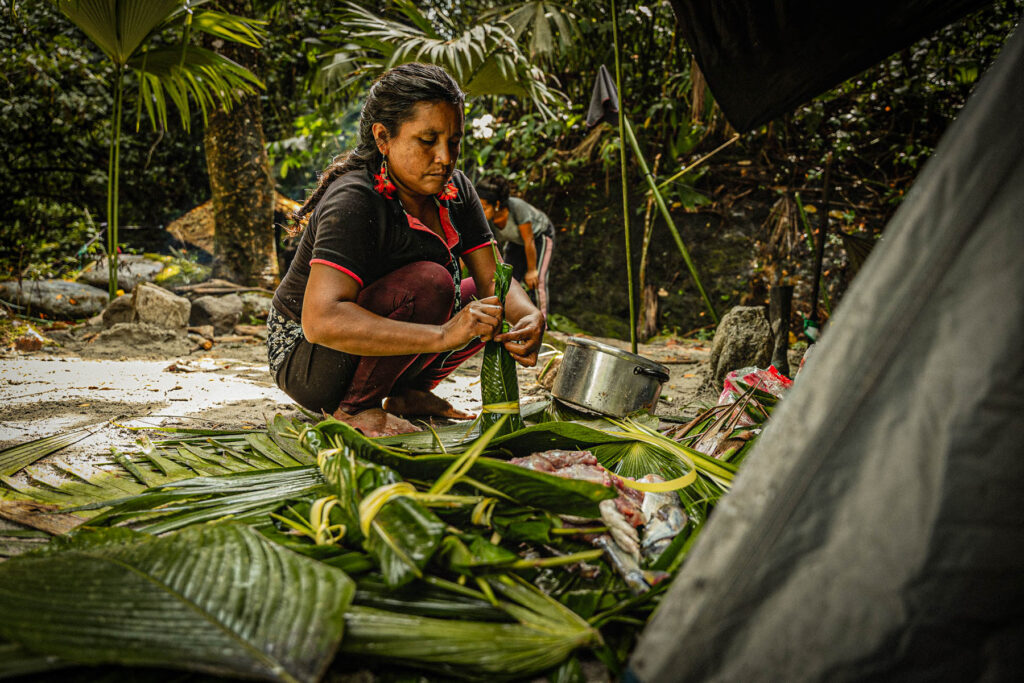
These subtle perspectives understand that a forest is not a plantation or a nature reservation, but a delicate symphony of beings, including humans. Biological diversity is what emerges through an abundance of interactions sustained in time. Over thousands of years of participation and relation in their environments, Amazonian cultures have crafted and passed down incredible stories, perceptions, and abilities.
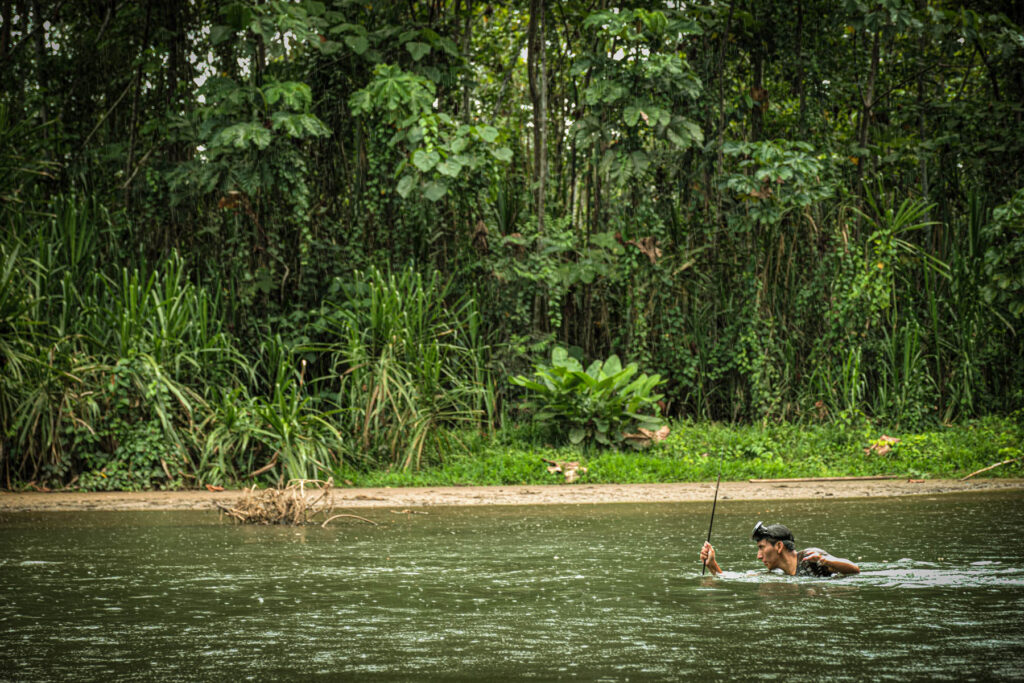
Amazonian cultures, in their plurality, approach their territories from a place of spiritual reverence and acknowledgment. As Jairo Irumenga reflects, “In the Amazon there are various nations, and in many of ours, we connect with the spirits of animals. In the case of the Waorani, we understand that when a Wao dies, it’s not their end. They return to their origin: to become a jaguar, and continue protecting the territory. Even though the Western world might see that humans and animals have no relation, we are convinced that when someone dies, they return to their roots. One way or another, spirits connect, just like plants are connected through their roots. Just like medicinal plants connect with us, protecting us and giving us that spiritual power to be deeply connected with the forest.”
Aneth Lusitande, a young Siona storyteller from San Victoriano, recalls that an appreciation of the aliveness and spiritual importance of all beings was inculcated from an early age in her community. As Aneth describes, “I grew up hearing advice, stories, myths and legends. Although it’s complicated to retell, these transmit that animals are part of celestial beings. Each animal, each insect, has a spiritual guide. Take the case of the danta (tapir) or the huangano (white-lipped peccary). They have their own guide who leads them through the forest. This guide is highly sacred and camouflaged. They can’t be seen, only by the most advanced shamans. But if you’re there, you feel their presence.”
A TAPESTRY OF LIFE UNDER THREAT

Yet biodiverse biomes like the Amazon, home to multitudes of species, are facing enormous perils. Between 1970 and 2018, wildlife populations around the world have declined by an average of 69%. The rate is even higher in Latin America, with a 94% decline over the last half-century. The global biodiversity crisis is accelerating the decimation of more-than-human life on our planet.
The Amazon, the heart of our Earth, is at the center of this crisis. Wild animals are facing the intense and immediate threat of habitat loss. Already, the Amazon as a whole has lost a fifth of its original area to deforestation and ecological damage. Extractive industries – from agribusiness to logging to miners – are encroaching deeper into Indigenous territories, polluting water sources and clearing swathes of forest. Such violence devastates the spaces animals rely on, rupturing the routes and corridors they use to migrate.

Climate change is also rapidly transforming the Amazon, intensifying the risk of droughts and forest fires, raising temperatures and destabilizing lifecycles. Many animals are suffering the consequences of heat stress, most clearly seen last year in the mass die-off of Amazonian fish and river dolphins across the lower Amazon. Unless urgent action is taken to confront the planetary crisis, the Amazon faces a brutal horizon of warming and desertification, even collapse. As Mitch Anderson, co-founder and director of Amazon Frontlines says: “We are at a clear crossroads: either we let business as usual consume the Amazon and with it the entire planet, or we fight back for our lives and dignity.”
PROTECTING DIVERSITY THROUGH PLURAL STRATEGIES
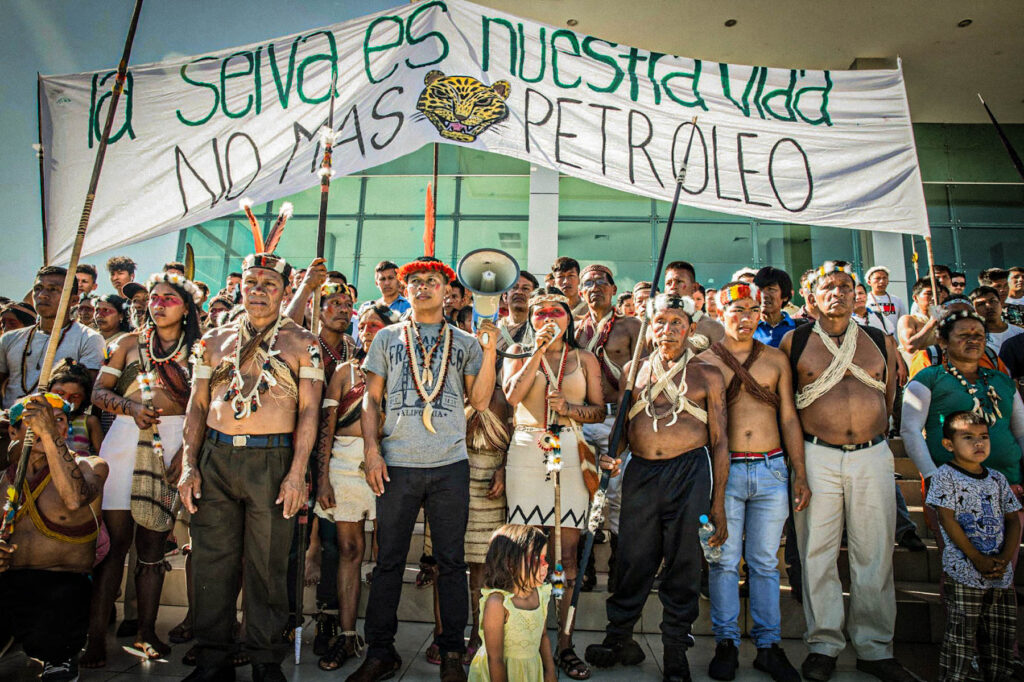
Against such vicious and overwhelming threats, at such a historic moment, how do we protect biodiversity and the conditions for the dignified survival of Amazonian nations?
We first have to acknowledge what works. Indigenous communities are across the board the most effective guardians of wildlife and biodiversity. 80% of the earth’s biodiversity exists in Indigenous territories, despite Indigenous peoples representing a far smaller fraction of the global population. Across the Amazon, between 2001 to 2020, deforestation was 14 times lower inside Indigenous territories compared to non-Indigenous areas.
At Amazon Frontlines and our partners at Alianza Ceibo, we know that conservation can only be successful through community-rooted stewardship of lands. The Amazon is what it is because of the human-animal relationships that have evolved there over millennia, and our priority is to protect these relationships, supporting Indigenous self-governance and cultural survival.
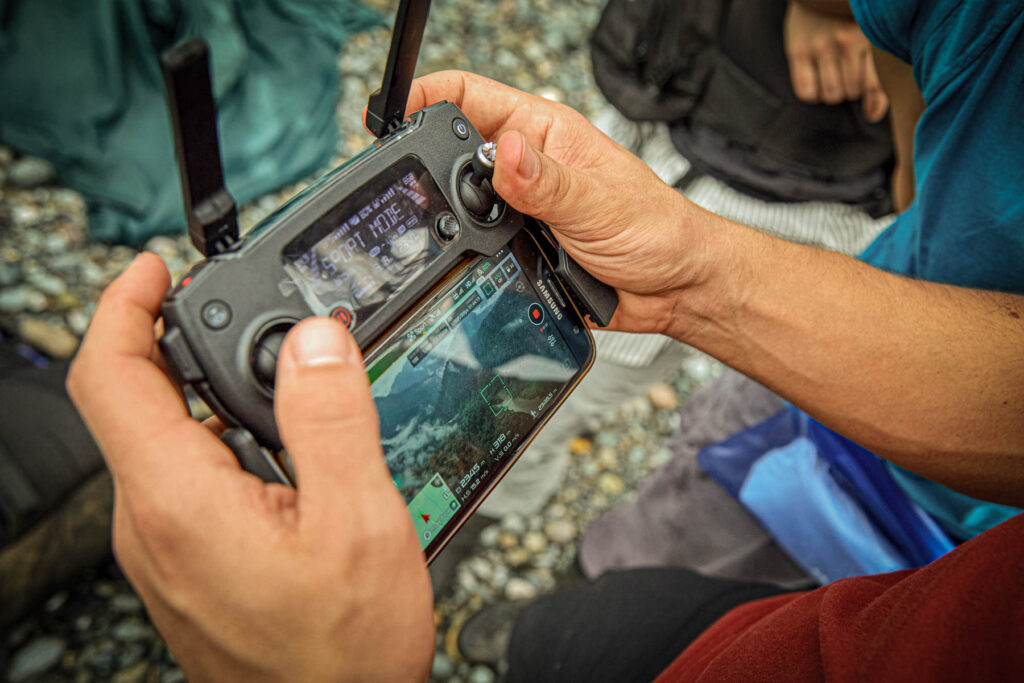
Over the years, we’ve recovered and replanted ancient food crops, created spaces to protect traditional ecological knowledge, empowered Indigenous youth to tell their own territorial stories, and so much more, knowing that it takes a diversity of strategies to protect holistic biodiversity. Our work continues to deploy a variety of tools – from mapping to monitoring to scientific research – all focused on strengthening the self-governance, power, and autonomy of Indigenous communities.
Part of this work involves supporting Indigenous nations to shield their biocultural heritage and make better sense of the state of life on their territories today. Over the last years, many communities have undergone processes to map and survey their lands.
Waorani communities along the Curaray river for example underwent a collective mapping process, where elders, women and youth shared their understandings of the territory. Rather than the linear satellite maps used by governments and corporations, which mark natural resources and extractive potential, communal cartography helps illustrate and document the diversity of a territory. The Waorani map shows jaguar trails, fishing holes, concentrations of medicinal plants, and landmarks that reflect millenia of interaction.
These maps have helped to safeguard communal stories, and were instrumental in 2019 when Waorani communities won a historic legal victory, protecting half a million acres from oil drilling.
More recently, communities have also been conducting biodiversity baseline studies, in-depth investigations to understand the state and extent of biodiversity on their lands. This research helps communities understand what is happening on the ground, better inform their internal decision-making, and communicate their territorial reality to the wider world.
Using tools such as camera traps and transects (a method used to count species following a line through a landscape), young Indigenous researchers have led this work, collaborating with scientists from a range of universities. The results of their co-authored research have already been published in peer-reviewed academic journals, modeling more horizontal ways of working between Indigenous communities and scientific bodies.
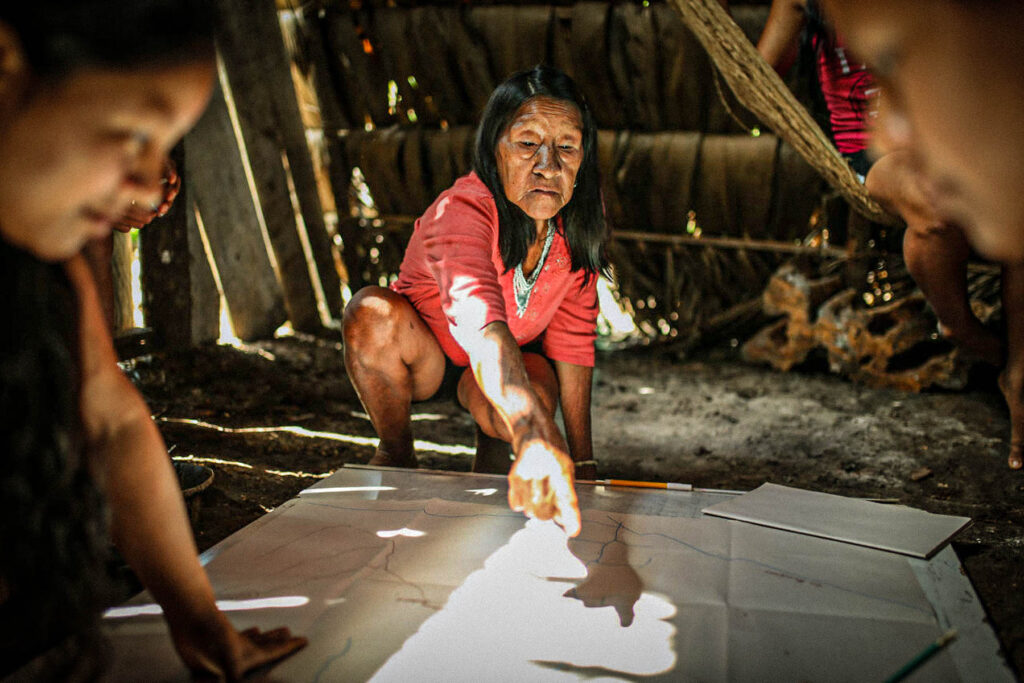
Documenting, archiving, and transmitting ecological knowledge is indispensable for safeguarding the Amazon’s biodiversity. As young Waorani communicator Aurelia Ahua, from Akaro in Pastaza province, reflects: “It’s crucial for us to transmit knowledge. My grandparents, my ancestors, had so much information, like a library. But my generation, we’ve forgotten a lot, partly because we collect so much information from outside that isn’t ours. We’re changing of course. But we’re committed to collect information from our elders, using tools to tell these stories to new generations.”
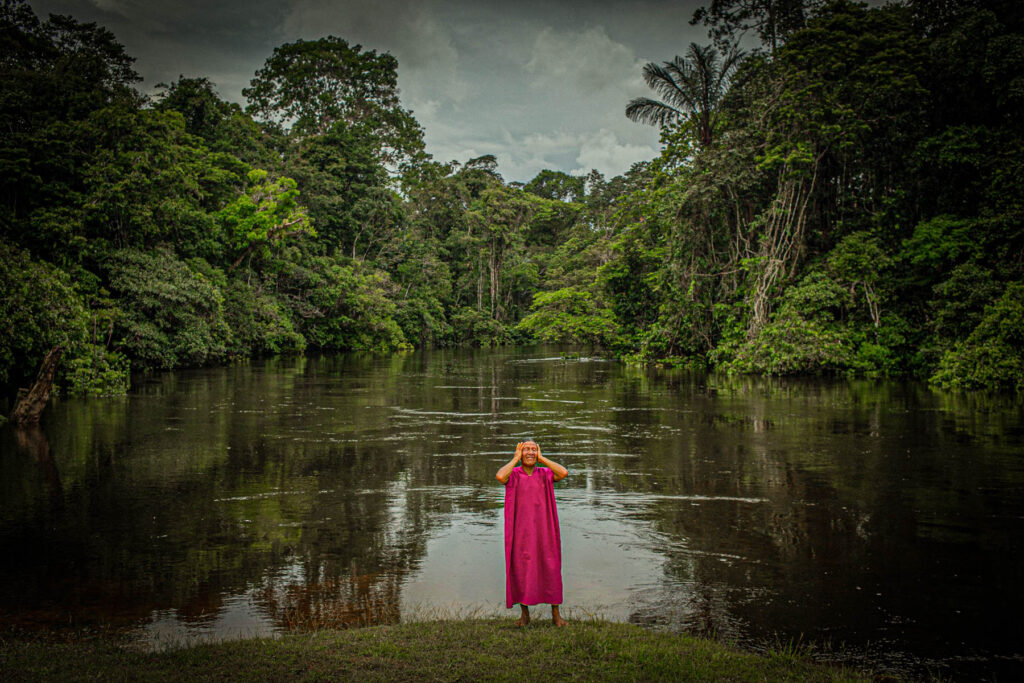
Amazonian biodiversity sustains the ecological balance of our planet. Whether we live in a metropolis like New York or in the heart of the Amazon itself, our territories connect us. We rely on each other to be. In this spirit, protecting the biodiversity of the Amazon means honoring Indigenous leadership and the right of communities to govern their territories on their own terms.
It also means going directly up against the extractivist politics of fossil fuels and mining companies in our societies, which is no easy feat. We can only rise to such an immense challenge together, building alliances between peoples, strengthening connections between human beings and the ecologies around them.
As young Siona storyteller Aneth Lusitande invites, “We need to protect nature, which is part of us, which we are part of. Biodiversity is ultimately life itself. As Indigenous peoples, caring for biodiversity means caring for and valuing who we are. Caring for all the life and diversity we are, for all the beings of the territory.”




